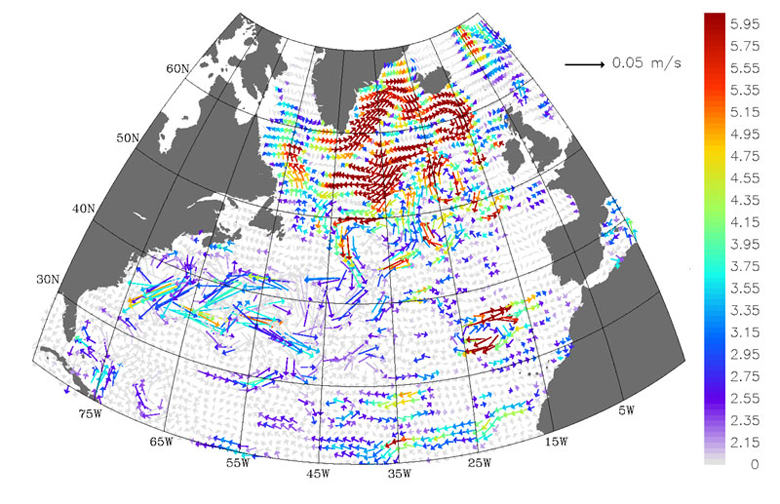Global Warming and Thermohaline Circulation
If you were one of the teenagers you learned about in the introduction to this section, you would definitely have a course mapped out before beginning a sailboat journey around the world. Even with a good route mapped out, the journey could take you well over a year. What kind of route does water itself take as it moves along in the oceans and how long does it take?
Again, the atmosphere and the oceans are absolutely connected. The sinking of surface water in the North Atlantic to form deep ocean water initiates the thermohaline circulation. This circulation plays an important role in transporting heat over the globe and moderating climate. As warm surface water returns to the North Atlantic, it brings heat to the polar area and regulates the amount of sea ice that builds up.
Like other parts of the atmosphere ocean system, thermohaline circulation may be affected by global warming.
One postulated effect of global warming is called slowdown of thermohaline circulation. Under this hypothesis, global warming would lead to disruptions of the normal thermohaline circulation as follows:
- Melting of glaciers in Greenland would lead to more freshwater being supplied to the oceans—since glaciers are made of freshwater, or non-salty water.
- The freshwater would not sink as deeply as the denser seawater.
- Because it is the sinking of cold water that drives thermohaline circulation, the addition of less dense freshwater could disrupt or slow down this circulation.
- Also, extra precipitation forecast by global warming could add freshwater to the oceans and have the same slowing effect on thermohaline circulation.

Data has already indicated that ocean circulation is slowing, especially in the northern polar region. The red areas on this map are the areas of the most intense slowing.